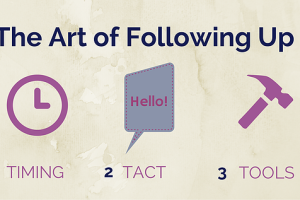If you are following popular psychology trends, then you might have come across the term Neuro-Linguistic Programming or NLP. NLP explores the relationships between our thought and communication patterns on one side and our behavioral and emotional reactions on the other. It provides a window into how our words and behaviors can change thoughts and emotions of others and ourselves.
The NLP craze started in the 1970’s when its pioneers, two psychology alumni named Richard Bandler and John Grinder, wanted to see what it was that made eminent therapists of that time so successful. They started by observing the work of these therapists and then modeling it in their own practice.
This approach is an eclectic fusion, which has borrowed from several proven psychological theories and techniques — that is what makes it so successful. My view of NLP is that you should not rigidly stick to everything people say about it. Just like with religion, yoga, travelling or any other experience, take from it as much as it feels right for you.
In my sales experience, it has proved to be useful for dealing with objections and creating rapport with prospects. Here are my tried-and-tested, NLP-based tricks and strategies, which have helped me, close many a sale.
Creating Rapport via Words and Body
Words
According to NLP, people differ in the way they store and recall information. There are 3 main ways, known as representational systems, to do this: visual, auditory and kinesthetic. Visual people remember things through images, auditory through sounds while kinesthetic people use the sense of touch.
You can recognize which representational system your client is using by paying attention to their vocabulary. Phrases such as “I imagine that / We want to see the big picture / How does that look to you?” reflect a visual person. Phrases such as, “How does that sound to you? / I hear what you are saying / That sounds a bit off,” are a sign that you are talking to an auditory person, while kinesthetic people would say something like, “That does not feel right / That grabs my attention.”
NLP says that if you emulate the way your client is talking, you will help them understand the content better and will also establish rapport with them. Subconsciously or not, they will feel more connected to you if you perceive and describe the world in a way similar to theirs.
Body
Another way to build rapport is to notice you client’s body cues and then pace them in a natural way. You can imitate their gestures, head nods, voice tone and even breathing. Is the person you are talking to a fast talker? Do the same and see what happens.
Once you have their pace, try leading them. Subtly change your pace, and see if the other person will follow suit. For example, let’s say your boss talks fast and this tends to make you nervous. Pace their tempo and then slow down to the tempo you find comfortable. If the rapport was established, the other person will slow down too. If it did not work, go back to pacing and try again.
Once you know you are leading their non-verbal behavior, the next step is to lead their verbal behavior, and thereby their thoughts, too! This brings me to the next point:
Handling Objections
Pacing
Pacing the client verbally means to rephrase what they said to show that you understand their perspective. For example, if a client says, “This product is too expensive for me,” you would say something along the lines of, “I understand that buying this product would be a strain on your budget.” Once they nod in agreement, you would lead with, “That is why we offer several payment plans, take a look at them here.”
It is important that you do not start countering their objections with solutions right away, but take the time to pace them verbally first. Otherwise, your client will feel their needs are not listened to, which will diminish the likelihood for a constructive dialogue.
Reframing
Aside from pacing, another convenient technique is reframing. Reframing is, put simply, changing the frame of an event, i.e. rephrasing it in a slightly different manner so as to bring out a whole new perspective on the situation. If you used the reframing technique in the scenario where your client is saying that they cannot afford to buy your product, you would reply with, “I understand that this is an investment.” The word ‘investment’ has a positive connotation, and implies that your client would be putting their money into something that will pay off.
Avoiding ‘but’
The word ‘but’ negates everything that has just been said. Just imagine your partner telling you, “I love you but…” The continuation of the sentence does not seem too promising, does it?
When your customer hears a ‘but’, they are automatically waiting for a counter argument to what they have just said. This means that they are listening not with their mind open but with their mind preparing for a counter-reply.
Whenever possible, replace ‘but’ with ‘and’. ‘And’ puts your clients in a receptive, not a defensive mode. In the previous example, you would say, “I agree it is an expensive product and it means you will get a better quality.” Test this: rewrite the ‘buts’ in your sales script with ‘ands’ and see what happens.
Expressing agreement
Use affirmative phrases such as “I agree / I appreciate / I respect that” to show your agreement with the client, even if there does not seem to be much to agree on: “I respect your honesty in saying that you want to hear my competition’s offer.”
Most importantly, when handling objections, make sure to respond rather than react. And always keep your emotions in check. If you are getting upset because it seems like your client is being stubborn or closed to what you are saying, take a step back and breathe. Otherwise the conversation can easily erupt into a debate. And nobody needs that.
On morality of NLP
Recently, there has been some controversy about the morality of using NLP in sales. My answer is that if you are sure that you are selling something that your prospect really needs, then using NLP is more than fine. In any case, you should not use NLP to manipulate people into buying something they do not want because they would be asking for a refund before your reach home – leaving you with the reputation of a sleazy salesperson.









Speak Your Mind